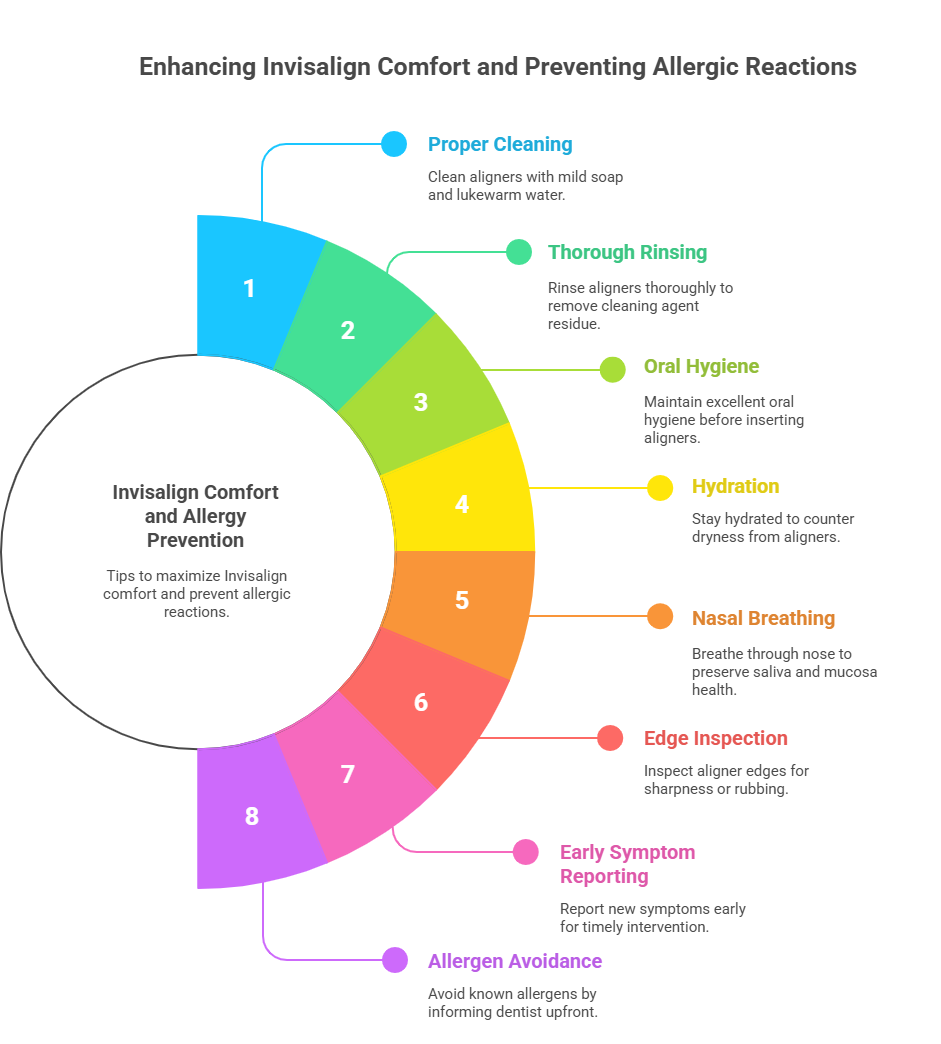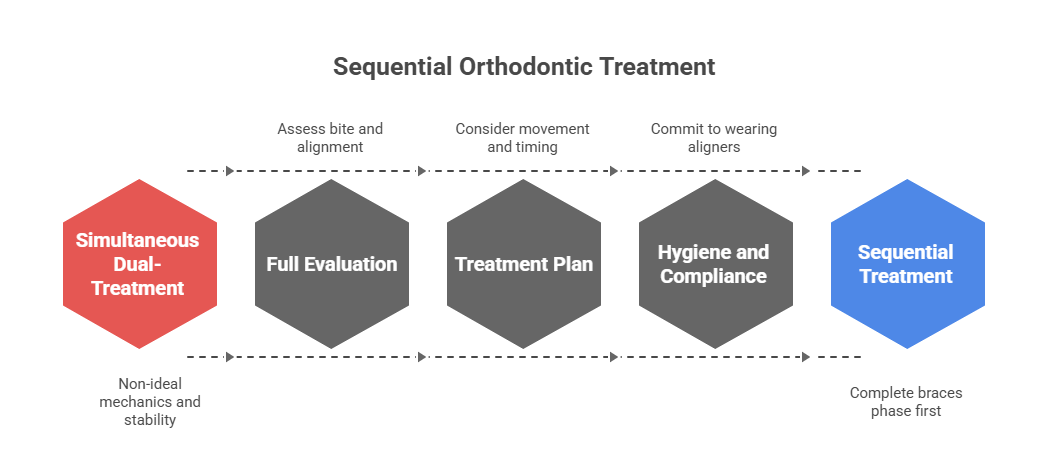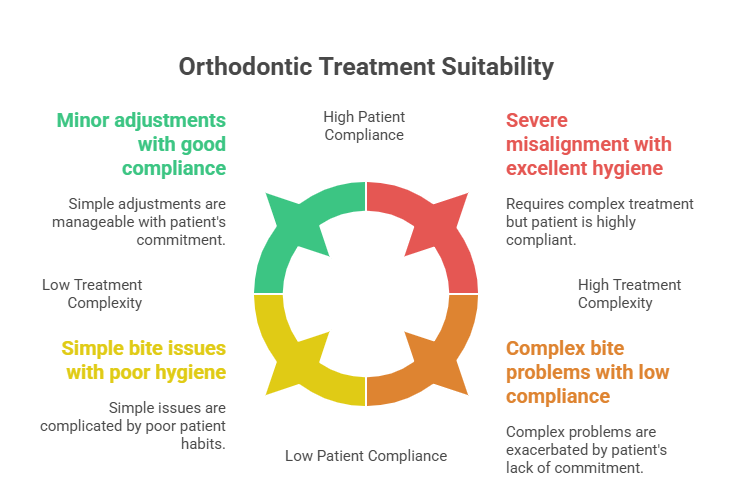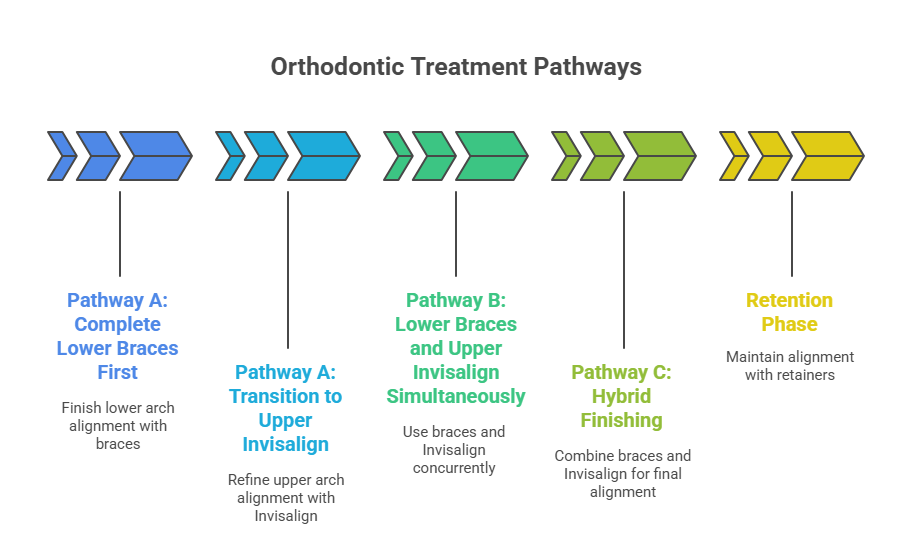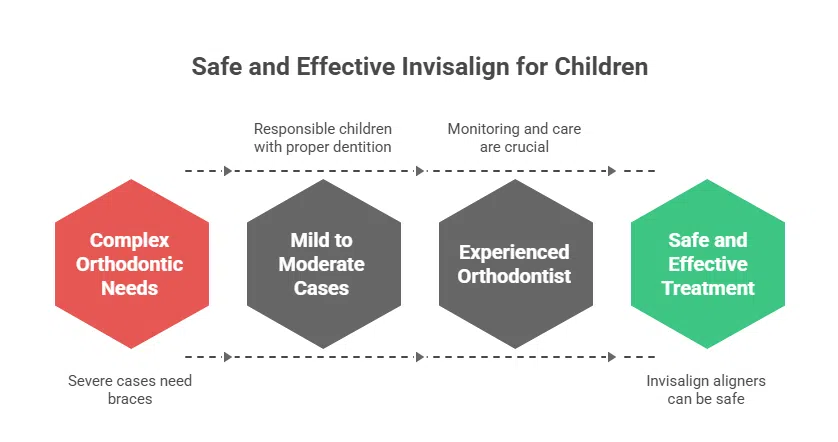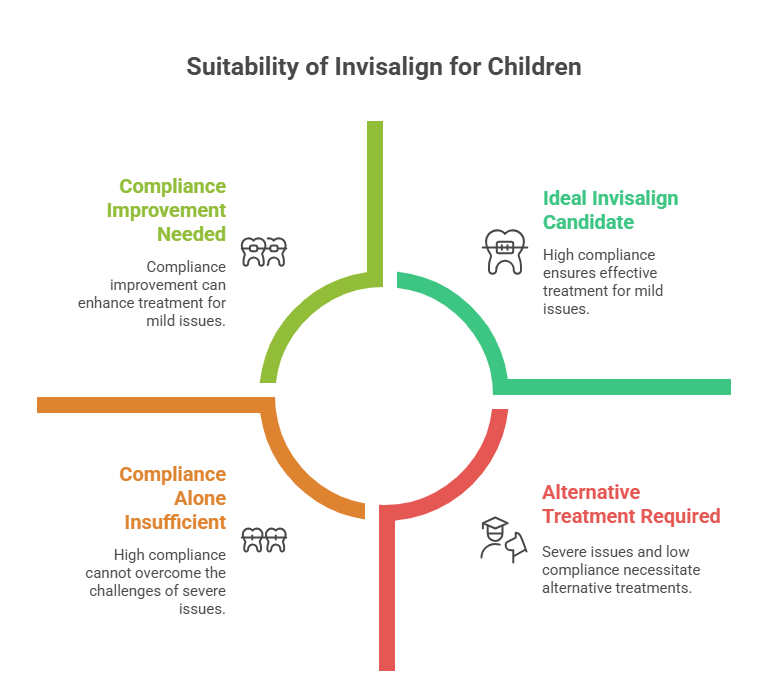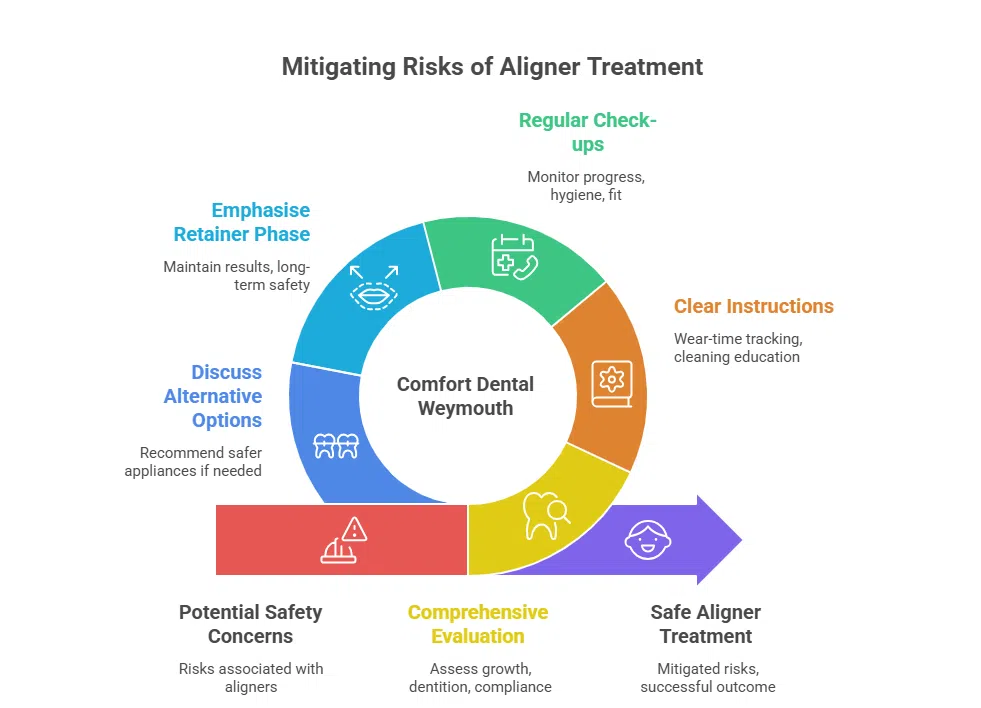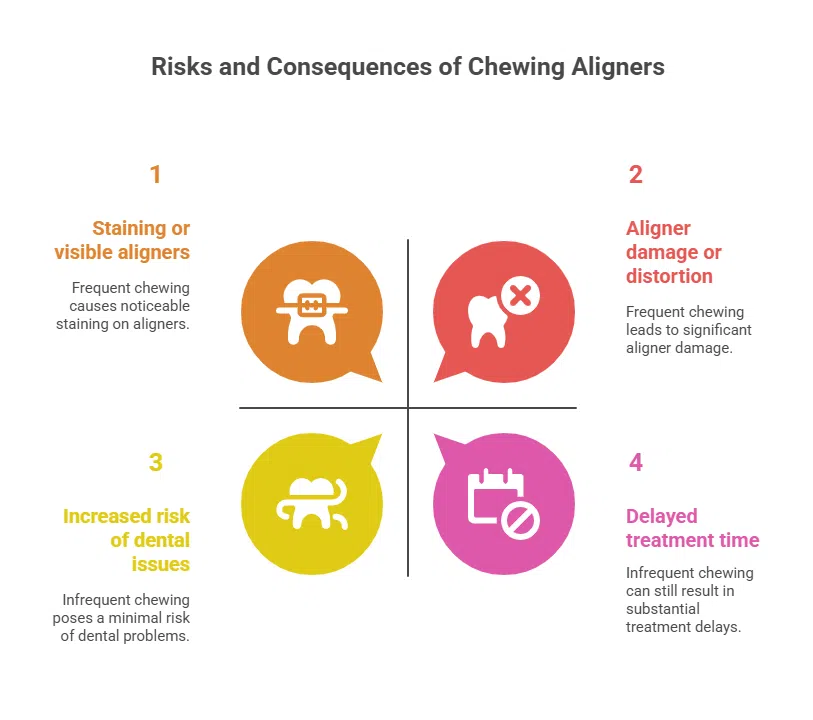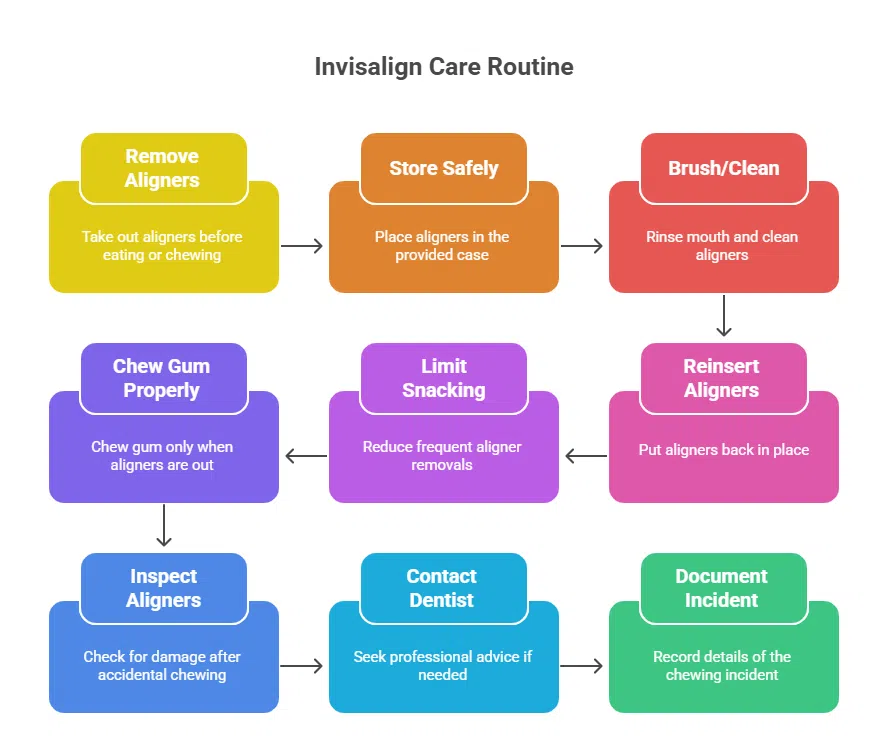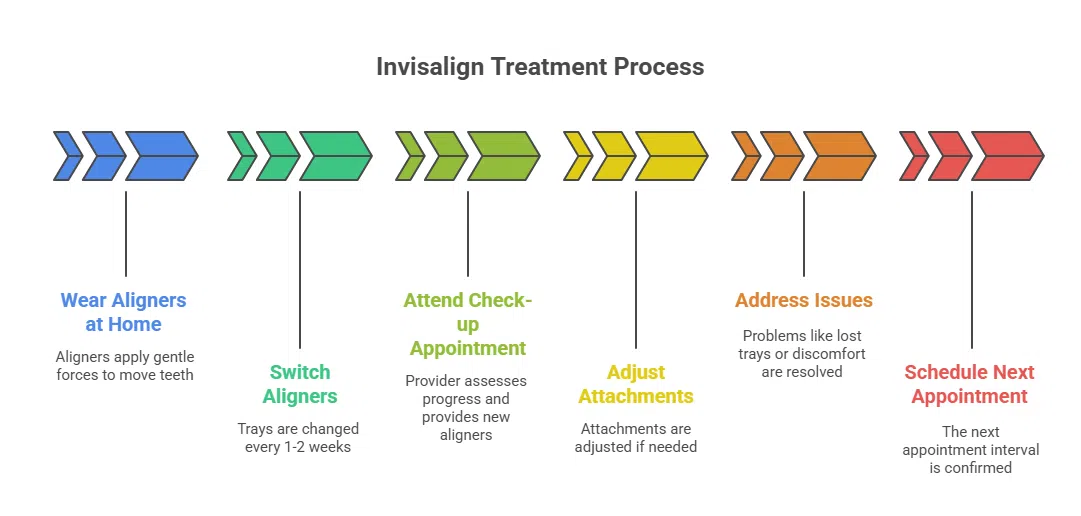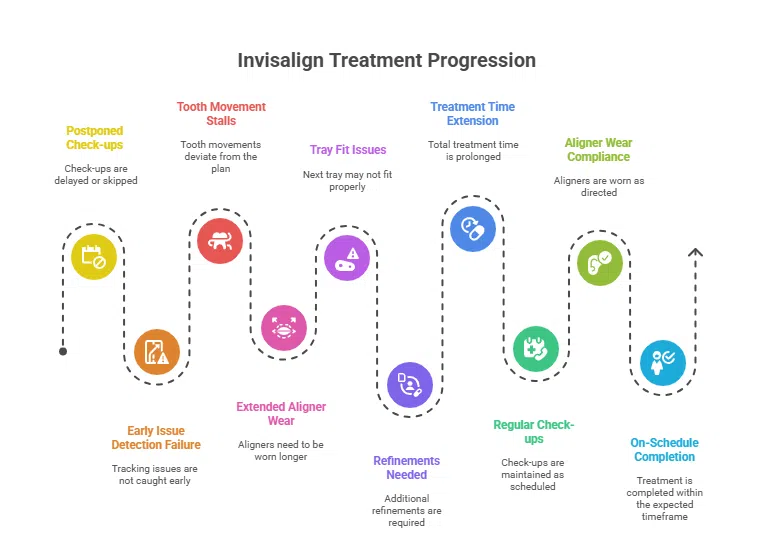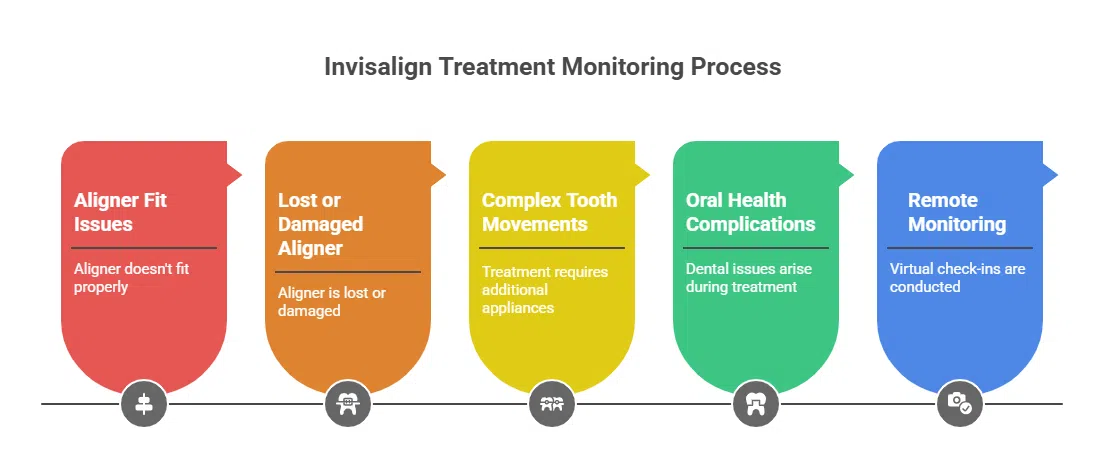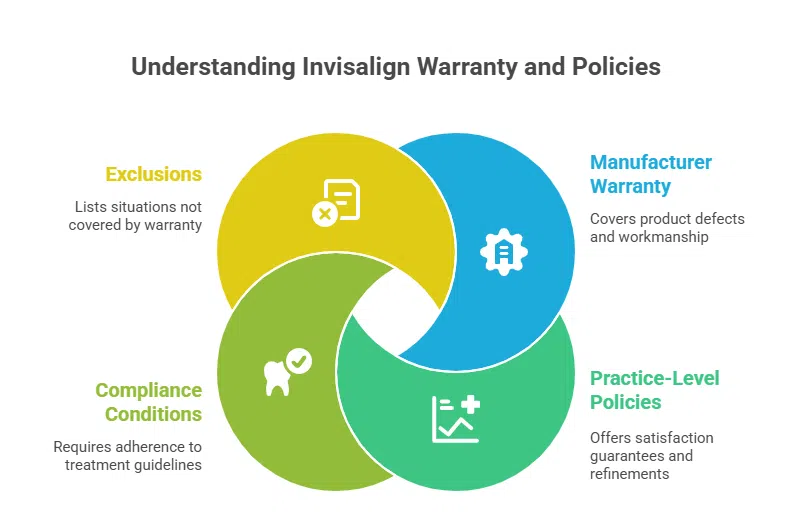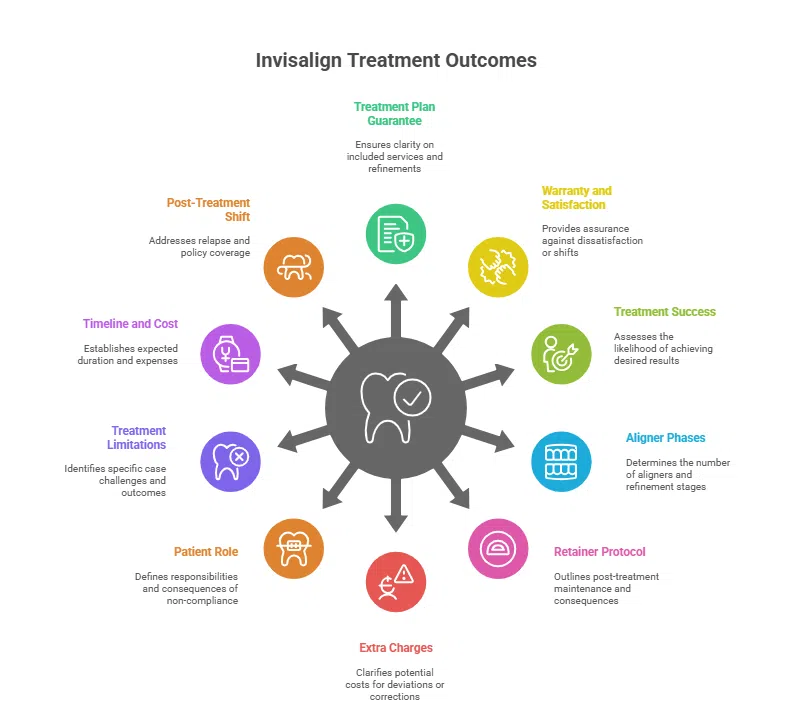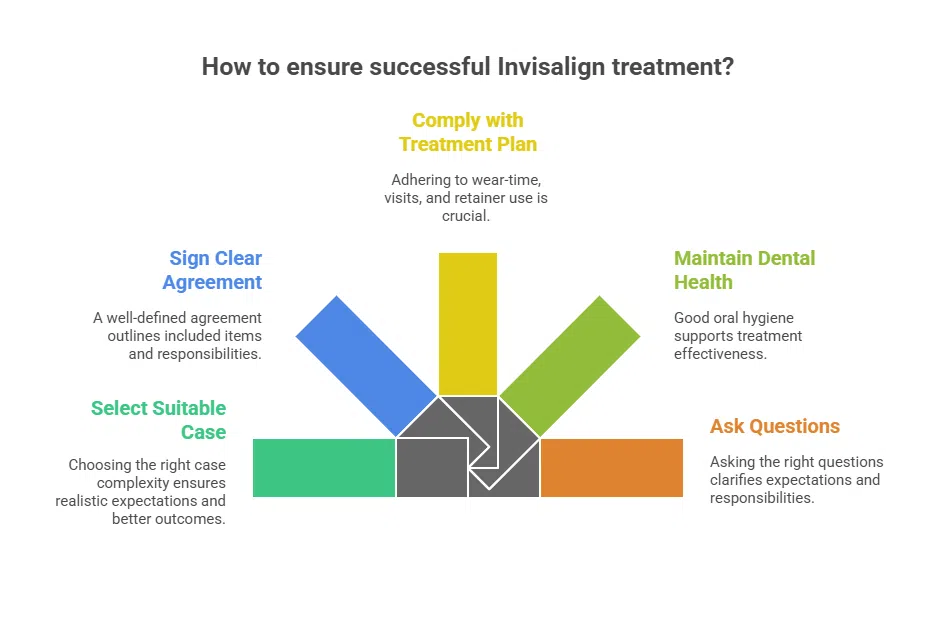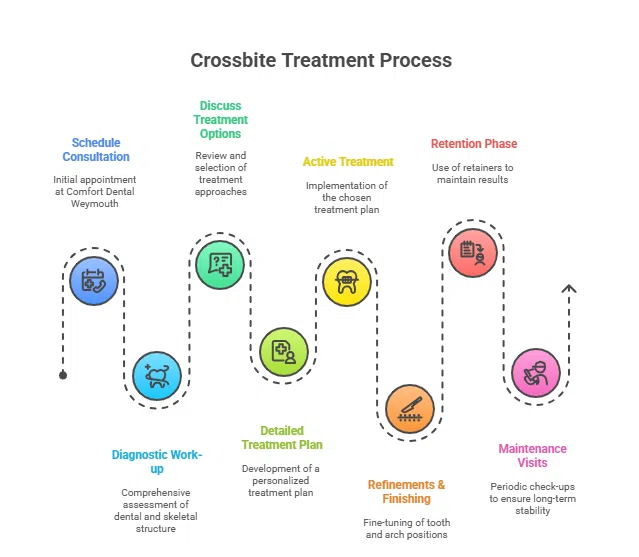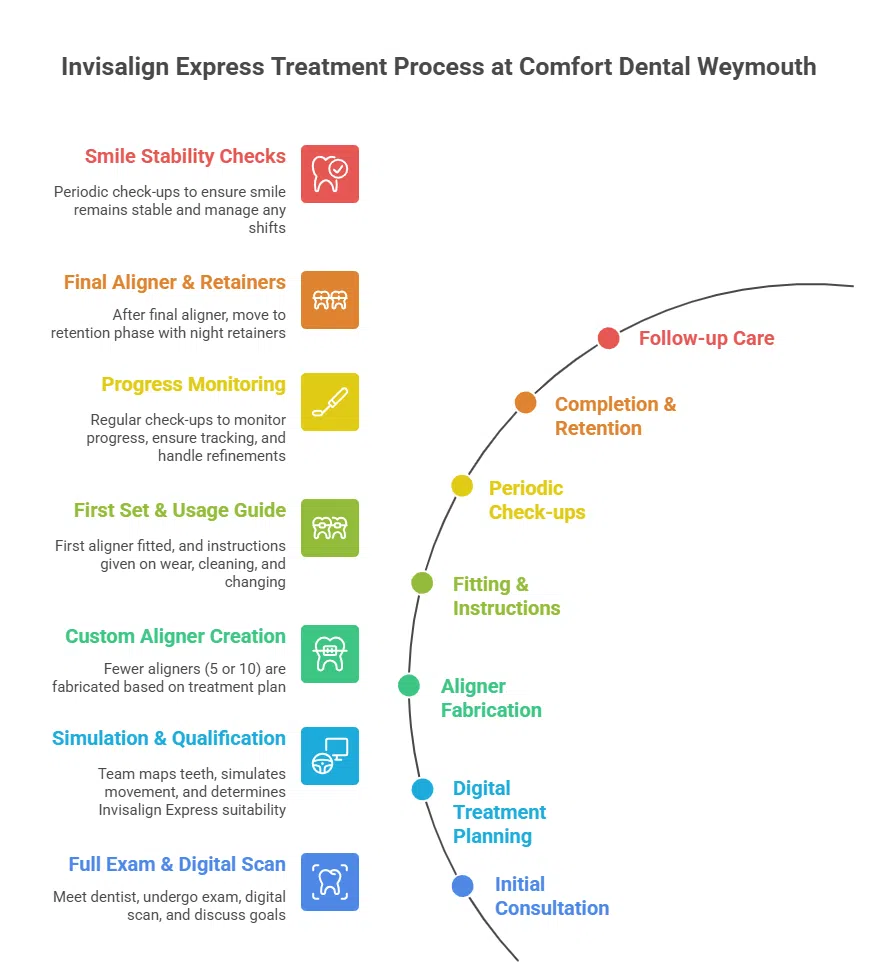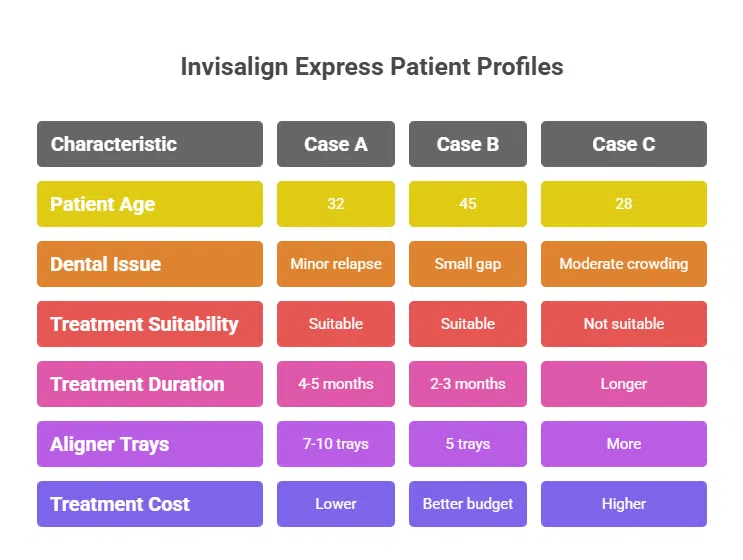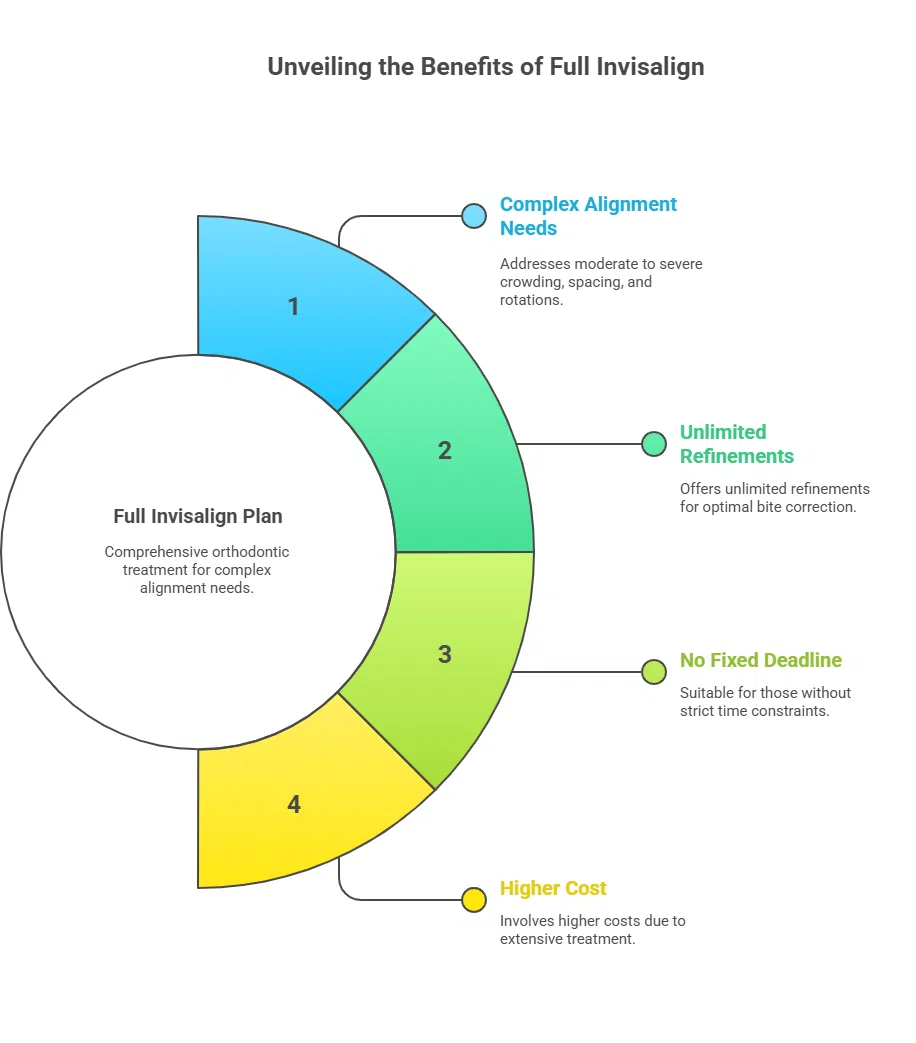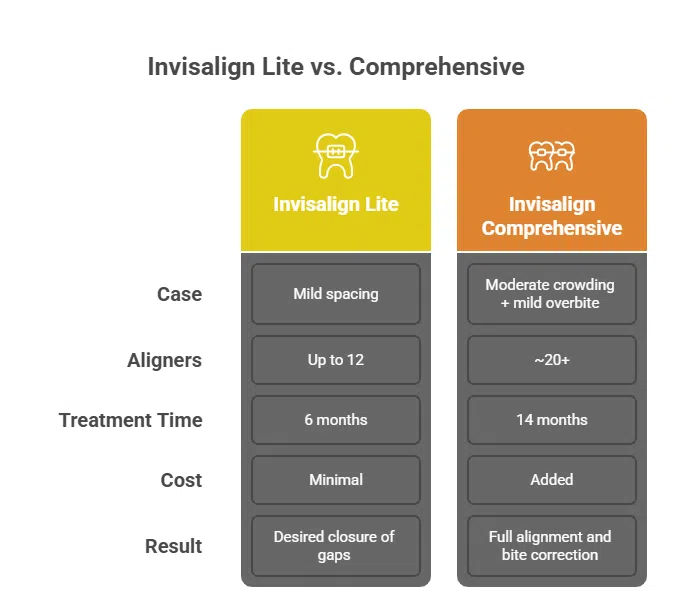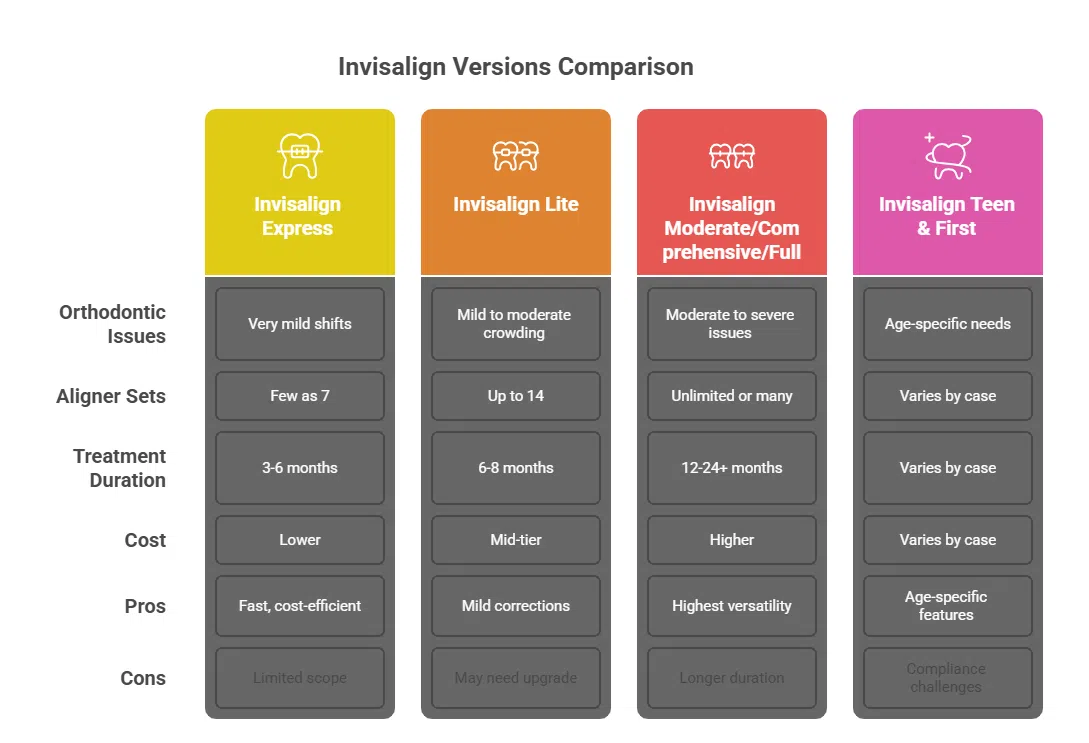If you’re considering orthodontic treatment with the clear-aligner system Invisalign and you live in or around Weymouth, MA, you may be asking: “Does Invisalign cause allergic reactions?” Short Answer: Allergic reactions to Invisalign are extremely rare. Most patients tolerate the aligners very well. However, a small number of people may experience mild irritation or sensitivity due to the aligner material, cleaning agents, or reduced saliva flow. With proper screening, hygiene, and dental supervision, these issues are usually easy to prevent or manage.
In this article we will explore how common these reactions are, what triggers them, what symptoms you should watch for (for example, “can you be allergic to Invisalign aligners”), how our practice manages them, and what alternative options exist. Whether you are a teen or adult considering Invisalign, this guide is written for you in Weymouth, MA and designed to give you a complete understanding.
Understanding Allergic Reactions and Sensitivities in Orthodontics
What is an Allergic Reaction vs a Sensitivity?
An allergic reaction (or hypersensitivity) occurs when the immune system reacts to a substance (allergen) as though it’s harmful, triggering inflammation, tissue changes or systemic signs. In orthodontics this might involve materials such as metals, plastic resins, adhesives or components of appliances. Sensitivity or irritation, on the other hand, may not involve the immune system exactly but may result in discomfort from mechanical friction, dryness, reduced saliva flow or hygiene issues.
How Common are Allergic Reactions to Invisalign?
According to multiple dental sources, allergic reactions to Invisalign are possible but very rare. One review states fewer than 5 % of patients experience sensitivity to Invisalign aligners. Other clinical literature notes only isolated case-reports of true allergic reactions to the aligner plastic or its components. So while the risk exists, for the vast majority of patients treatment proceeds without material‐related allergy. At Comfort Dental Weymouth we emphasise this: the chance of “Invisalign allergic reaction gum swelling tongue” or similar is low—but we still prepare for it.
What Triggers an Allergic Reaction to Invisalign?
Understanding triggers helps with prevention and management of “what are signs of Invisalign material sensitivity”.
The Plastic (Thermoplastic) Material
Invisalign aligners are manufactured using a proprietary thermoplastic (SmartTrack®) or similar medical-grade plastic. Some patients may have allergies or sensitivities to plastic resins or chemical components used in their manufacture (for example isocyanates, monomers). Laboratory studies show slight cytotoxicity in aligner materials. This doesn’t equate directly to clinical allergy, but suggests a small risk exists.
Resin, Dyes or Additives
Some aligner systems may use resin components, pigments or particular additives that in rare cases may trigger contact allergies. In some blogs, “Invisalign plastic allergy mouth irritation” is attributed not to the main plastic but to cleaning agent residues, pigments or adhesives used in attachments.
Reduced Saliva / Dry Mouth (Xerostomia)
Wearing aligners for long hours may reduce saliva flow or encourage mouth-breathing. The resultant “dry environment” can make soft tissues more vulnerable, and some irritations may mimic allergic reactions. Some authors suggest that mouth dryness (xerostomia) during clear aligner therapy can amplify sensitivity of gums, cheeks and tongue.
Cleaning Agents / Hygiene Residues
Poor cleaning of aligners or residue from cleaning products (e.g., harsh chemicals, scented cleansers) may cause irritation or allergy‐type responses. For example, patients report “clear aligner allergic reaction what to do” when cleaning agents rather than the aligner itself were the culprit.
Patient Predisposition
Individuals with known allergies (e.g., to plastics, acrylics, dental resins, latex) may have an elevated risk. Appliance factors (fit, contact duration, mucosal exposure) and individual factors (immune status, saliva flow, hygiene) combine to determine risk.
What are the Signs & Symptoms of an Invisalign Allergy (or Material-Sensitivity)?
Knowing the signs helps you take action early if you suspect “Invisalign allergy symptoms in adults”.
Localised Symptoms (Mouth, Gums, Tongue)
- Itching or tingling of gums, tongue, cheeks
- Redness, inflammation or swelling of gum tissue or inner cheeks
- Burning sensation on tongue or gums
- Ulcers or small sores (case reports link these to aligner resin allergy)
- Dry mouth, increased saliva flow abnormality leading to discomfort
Peri-oral / Systemic Symptoms (Rare)
- Swelling of lips, cheeks or face
- Rash or hives around the mouth, cheeks or neck
- Tongue swelling, throat tightness, breathing difficulty (in extremely rare, severe cases)
If you ever experience lip/tongue swelling or breathing difficulty while wearing your aligner, remove the tray and seek emergency care immediately.
When It’s Likely Not an Allergy
- Mild pressure or soreness during initial aligner wear (normal adjustment)
- Discomfort that resolves within a few days of switching trays or initial insertion
If symptoms persist, worsen, or include itching/burning/ rash — then allergy or material sensitivity should be considered.
What to Do if You Suspect an Allergic Reaction to Invisalign
At Comfort Dental Weymouth in Weymouth MA, your comfort and safety is our priority. If you suspect a reaction, here’s a clear guide to follow.
Immediately Remove the Aligner and Schedule Evaluation
If you notice symptoms like persistent itching, swelling, rash, or unexplained discomfort after inserting a new tray, take the aligner out and contact your dental provider. If symptoms include difficulty breathing or throat swelling — go to emergency immediately.
Diagnostic Process
- Review your allergy history: plastics, acrylics, metals, adhesives
- Examine oral tissues for signs (gums, cheeks, tongue)
- Consider patch testing: some clinics place a small piece of the aligner material on skin for a few days to test for reactivity
- Rule out other causes: fit issues, hygiene problems, tray edges rubbing, dry mouth
Mitigation Strategies
- Switch to a more hypoallergenic cleaning routine; avoid scented or harsh chemicals
- Improve tray hygiene: rinse thoroughly, clean aligner after meals, avoid residue
- Stay well-hydrated, address dry mouth, breathe through nose
- Adjust tray fit: if edge is rough or rubbing gum, ask dentist to smooth it
- Consider protective barriers: small liner or tray edge adjustment may help if discomfort is mechanical rather than true allergy
- Use antihistamines or topical agents as directed by your dentist if mild reaction
When to Switch Treatment
If symptoms persist or are severe (lip/tongue swelling, rash, systemic signs) your orthodontist may recommend switching to an alternative aligner material, or braces (metal/ceramic) with different composition. At Comfort Dental Weymouth we review all options in Such cases to ensure your comfort and treatment continuity.
What This Means for You in Weymouth MA at Comfort Dental Weymouth
If you live in Weymouth MA and you’re thinking of starting Invisalign treatment at Comfort Dental Weymouth, here are the key applications tailored for you.
Pre-Treatment Screening
- During your initial consultation at our Weymouth MA practice we will review your full medical and allergy history (including plastics, acrylics, adhesive, latex).
- We will discuss the possibility of “can you be allergic to Invisalign aligners” so you’re aware of signs and symptoms.
- If indicated (e.g., strong plastic allergy history) we may recommend a patch test or an alternate aligner material.
- You’ll receive guidance on hygiene, fitting, and cleaning protocols to minimise “Invisalign plastic allergy mouth irritation”.
Monitoring During Treatment
- We will monitor your comfort at each appointment and ask specifically about any itching, burning, swelling of gums, tongue or cheeks.
- If a new tray causes unusual symptoms, we will evaluate whether it’s adjustment period vs sensitivity.
- We emphasise the difference between normal discomfort (new tray pressure) and possible allergy (persistent burning/itching/swelling).
If You Report Symptoms
- If you report gum itching, tongue burning or cheek swelling we will inspect tray fit, hygiene, contact surfaces and may adjust tray edges or switch cleaning method.
- If symptoms persist or worsen, we may switch to an alternate aligner material or a different orthodontic system.
- For emergencies (lip/tongue swelling, breathing difficulty) we act immediately with appropriate referrals.
Benefits Versus Risk for Most Patients
- For the vast majority of patients at Comfort Dental Weymouth, Invisalign remains a safe, comfortable, highly effective orthodontic treatment with minimal risk of allergic reaction.
- The benefit of discreet, removable aligner therapy often outweighs the low risk of material sensitivity.
- Our patient-centred approach in Weymouth MA means we tailor treatment to your needs, track your comfort, and have strategies in place to handle the rare sensitivity case.
Preventing Allergic Reactions and Enhancing Comfort with Invisalign
Here are actionable tips for you — whether you’re about to start Invisalign, or already wearing it — to minimise risk of “clear aligner allergic reaction what to do” and maximise comfort.
- Clean your aligners properly: Use lukewarm water, mild non-fragranced soap or aligner-specific cleaner. Avoid harsh chemicals, bleach or scented cleansers that might leave residues.
- Rinse trays before insertion: After cleaning, rinse thoroughly to remove any cleaning agent residue.
- Maintain excellent oral hygiene: Brush and floss thoroughly before inserting the tray. This reduces bacteria build-up which can irritate mucosa and mimic allergies.
- Stay hydrated: Drink water frequently, especially cool water, which helps counter reduced saliva and soft-tissue dryness associated with aligners.
- Breathe through your nose: Mouth-breathing dry out tissues, so try to keep nasal breathing to preserve saliva and mucosa health.
- Inspect tray edges: If you feel sharpness or rubbing at the gum, cheek or tongue, call your orthodontist to smooth the edge. Often “irritation” is mechanical not allergic.
- Report new symptoms early: If you experience itching, burning, swelling, persistent gum redness or unusual sensation — don’t wait. Early intervention often allows you to continue treatment.
- Avoid known allergens: If you know you’re allergic to plastics, acrylics or adhesives, tell your dentist upfront. They may choose a material or appliance with lower risk.
- Consider material testing: If you have a strong plastic allergy history, ask about applying a small sample of the aligner plastic to skin for a few days under supervision.
- Stay in communication: At Comfort Dental Weymouth we encourage you to bring up any discomfort at your appointments rather than “tough it out”.
Comparing Invisalign and Braces in Terms of Allergy Risk
A common question is: “Invisalign vs braces allergies – which is safer?” Let’s compare.
Traditional Braces
Traditional braces use metal brackets, wires (often steel, nickel, titanium), and adhesives. Metal-ion release and nickel allergies are well documented. The contact time is long, and tissue exposure is continuous. In patients with known metal allergies (nickel, chromium), fixed braces may carry higher relative risk of allergic reaction.
Clear Aligners (Invisalign)
Clear aligners use plastic, not metal. So many metal‐allergy risks are eliminated. The trays are removable, making cleaning easier and reducing some tissue exposure risk. However, plastic/resin allergies or sensitivities are still possible. Thus for patients with metal allergy but no known plastic sensitivity, Invisalign may in fact be the safer choice.
Choosing the Right Type
At Comfort Dental Weymouth, we evaluate your full allergy history. If you have known nickel/metal allergy, Invisalign (or another plastic aligner system) might be strongly preferred. If you have known plastic/acrylic sensitivity, then braces of alternative materials (ceramic, titanium, lingual) might be considered. The right choice is individualised, based on your history, treatment goals and comfort.
Summary & What’s Next at Comfort Dental Weymouth
To wrap up:
- Does Invisalign cause allergic reactions? Yes — but only rarely. For most patients the answer is “no significant allergy”.
- The main triggers for reactions are plastic/resin materials, cleaning-agent residues, reduced saliva/dry mouth and individual predisposition.
- If you start noticing symptoms like itching, burning, swelling of gums, tongue or cheeks, you should seek evaluation rather than ignore.
- Many preventive steps (cleaning, hydration, inspection, early reporting) reduce the risk.
- If a reaction persists or is severe, switching treatment material or appliance type is a viable, safe option.
- At Comfort Dental Weymouth in Weymouth MA, our goal is a straight, healthy smile delivered safely and comfortably. We screen, educate, monitor and tailor your treatment to your individual needs.
If you’re ready to discuss whether Invisalign is right for you — or if you’re currently wearing Invisalign and wondering whether your discomfort could be due to a material sensitivity — please schedule a consultation at our Weymouth office. Our team is here to guide, reassure and deliver the smile you deserve.
People Also Ask
- Can I be allergic to Invisalign aligners?
Yes, although it’s very uncommon. Because aligners are made of medical-grade thermoplastic, some individuals with plastic or resin sensitivities may react. - What are the signs of an Invisalign allergy?
Watch for itching, tingling or burning in your gums, tongue or cheeks; redness or swelling of soft tissues; unexplained ulcers; lip or face swelling; even rash or hives in more severe cases. - What causes an allergic reaction to Invisalign?
Possible causes include sensitivity to the plastic material, resin or dyes in the aligner, residues from cleaning agents, reduced saliva flow (dry mouth) and individual predisposition. - How common are allergic reactions to Invisalign?
Very rare. While exact numbers are hard to determine, fewer than 5 % of patients are reported to experience sensitivity. For most patients, treatment proceeds without issue. - What should I do if I think I’m allergic to my aligners?
Remove the aligner, contact your dentist for evaluation, review your allergy history, inspect fit/hygiene, and consider switching materials or treatment if symptoms persist. - Can I continue Invisalign treatment if I have an allergy?
Often yes—depending on severity. If the issue is mild, your dentist may manage it; if it’s a true allergy to the aligner material, switching to another aligner or braces may be required. - Is Invisalign safer than braces for someone with allergies?
It depends on the specific allergy. For someone with metal allergy, Invisalign may be safer because it uses plastic. For someone with plastic/resin allergy, braces may be safer. - How can I minimise the risk of allergic reaction with Invisalign?
Inform your dentist of known allergies, maintain excellent hygiene, clean trays properly, rinse before use, stay hydrated, monitor for symptoms and switch cleaning methods if needed. - Can cleaning products for aligners cause allergic reactions?
Yes. Cleaning agents with strong chemicals, fragrances or alcohol residues can irritate soft tissues or trigger sensitivity that appears like an allergy. - What alternatives are available if I’m allergic to Invisalign?
Options include other clear aligner systems with different materials, ceramic braces, lingual braces, or traditional metal braces (if plastic allergy but no metal allergy).
Frequently Asked Questions (FAQs)
- What material are Invisalign aligners made of?
Invisalign aligners are made from a proprietary medical-grade thermoplastic resin (such as SmartTrack®) designed for comfort, invisibility and effective tooth movement. - Can I test whether I’m allergic to Invisalign before starting treatment?
Yes. Some dentists perform a patch test by placing a small piece of the aligner material on your skin for several days to check for skin reaction before full treatment. - How long after starting Invisalign might an allergic reaction show up?
It varies, but some reactions appear within days of wearing the first tray or switching to a new tray. If symptoms persist beyond the adjustment period, an allergy should be considered. - What’s the difference between normal discomfort and an allergy?
Normal discomfort typically involves pressure, mild soreness or tightness when trays shift teeth, and resolves within a few days. An allergy involves persistent or worsening symptoms, such as itching, burning, swelling, rash or unusual sensitivity. - Can dry mouth caused by aligners be mistaken for an allergy?
Yes. Wearing aligners may reduce saliva flow or promote mouth-breathing, which can lead to tissue dryness and irritation that may mimic an allergic reaction. Addressing dry mouth can improve symptoms. - If I’m allergic to Invisalign, can I still complete my orthodontic treatment?
Yes—by switching to an alternative aligner material or to conventional braces. Your orthodontist will guide you through a safe transition to complete your treatment with minimal disruption. - Are there special cleaning methods for aligners to avoid reaction?
Yes. Use mild, fragrance-free cleaners, rinse trays thoroughly before insertion, avoid harsh chemicals or alcohol-based cleaners, and maintain strong oral hygiene to reduce bacteria-related irritation. - What if I experience swelling of lips or throat while wearing Invisalign?
This is a serious symptom—stop using the aligner, remove the tray, seek immediate medical/orthodontic attention. These may be signs of a severe allergic reaction (anaphylaxis). - Does Invisalign contain nickel or latex?
Generally no — Invisalign aligners themselves do not contain nickel or latex. However, attachments or auxiliary components in some orthodontic systems may include different materials. Always declare known allergies to your dentist. - How can I choose the right orthodontic option in Weymouth MA if I have allergies?
At Comfort Dental Weymouth, we evaluate your full allergy history, perform any indicated sensitivity tests, review your treatment goals and comfort priorities, and then recommend the most appropriate system (Invisalign or alternative) tailored to you.
Conclusion
In the question “Does Invisalign cause allergic reactions?”, the short answer is: it’s possible but very unlikely. Most patients who undergo aligner treatment have no issues with material sensitivity. However, because the aligners are in constant contact with the mouth’s soft tissues and for many hours each day, any predisposition to plastic- or resin-sensitivity, or exposure to irritant cleaning agents, can elevate the risk—or mimic allergy-type symptoms.
If you are considering Invisalign treatment and have any concerns about allergies or sensitivities, please visit Comfort Dental Weymouth, 47 Washington St, Weymouth, MA 02188, (781) 337-3300.



